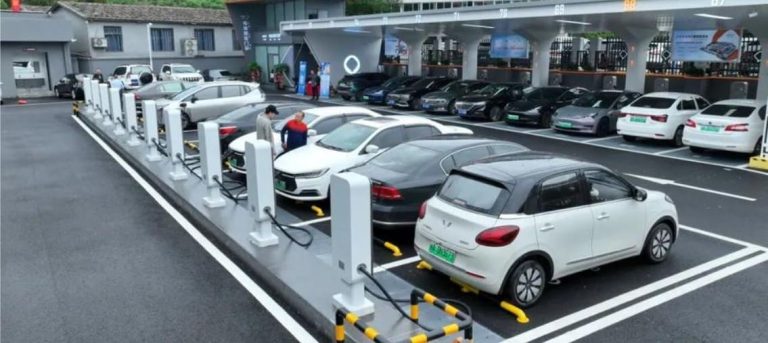Is 125 amp service enough for ev charger?

Is 125 amp service enough for ev charger? Installing a Level 2 home EV charger usually only requires a 125-amp electrical service, though how adequate this is will depend on your home’s current electrical load, the charger’s specific amperage, and whether load management techniques are used.
Understanding Electrical Service Capacity and EV Charger Demands
The main hub for power distribution in your home is the electrical service panel. The maximum amount of current that can be safely drawn into your home at any given time from the utility grid is indicated by the service’s amperage rating, which in this case is 125 amps. All of your electrical appliances, including air conditioners, electric water heaters, dryers, kitchen outlets, lighting, and now an EV charger, must share this total capacity.
A Level 2 EV charger, which operates on a 240-volt circuit (similar to an electric dryer or oven), is the standard for practical home charging. These chargers are not monolithic; they come in various amperages, commonly 16A, 24A, 32A, 40A, 48A, and sometimes higher. The higher the amperage, the faster your car charges. For instance, a 40-amp charger will replenish your battery significantly faster than a 24-amp one. The crucial question is whether your 125-amp service has enough spare capacity after accounting for all other household electrical demands to dedicate a new circuit to one of these chargers without risking overloading the entire system.
The Critical Role of a Professional Load Calculation
You cannot determine capacity by simply adding up the amp ratings of all your circuit breakers. The National Electrical Code (NEC) requires an electrician to perform a formal load calculation to assess the true demand on your service. This calculation is sophisticated. It doesn’t assume every appliance runs at maximum power simultaneously. Instead, it applies “demand factors” that account for the realistic, intermittent use of most devices.
For a 125-amp service, the NEC stipulates that the continuous load should not exceed 80% of its rating. Continuous load is defined as any load expected to last for 3 hours or more—a category that perfectly describes EV charging. This means the safe, continuous operating limit for a 125-amp service is 100 amps (125A * 0.8).
An electrician will calculate your home’s existing “diversified load”—the likely maximum simultaneous draw from all your conventional appliances. If this calculated load is, for example, 70 amps, then you theoretically have 30 amps of continuous capacity available (100A – 70A). This 30-amp capacity could support a 24-amp EV charger (which requires a 30-amp dedicated circuit, as circuits are also limited to 80% continuous load). However, if your home’s calculated load is already 90 amps, you only have 10 amps of continuous capacity left, which is insufficient for even the smallest dedicated EV charger circuit and would necessitate a different solution.
Solutions for Integrating an EV Charger with a 125-Amp Service
If the initial load calculation shows limited spare capacity, you are not necessarily forced into a costly service upgrade. Several effective solutions exist:
- Load Management Device (EVEMS): An Electric Vehicle Energy Management System (EVEMS) is a smart device that is often the ideal solution for this scenario. It is installed between your electrical panel and the EV charger. The EVEMS continuously monitors the total current flowing into your home. If it detects that the overall load is approaching the 125-amp limit (e.g., the air conditioner and electric oven kick on while the car is charging), it will instantly and automatically reduce the power to the EV charger, just enough to prevent the main breaker from tripping. Once the other high-demand appliances cycle off, it restores full power to the charger. This allows you to install a higher-powered charger than your service could otherwise handle, all without any disruption to your household’s electricity.
- Strategic Charger Selection and Usage: Opting for a mid-range amperage charger, such as a 32-amp model, is a prudent choice for a 125-amp service. Furthermore, you can leverage smart charging features. Most modern EVs and chargers allow you to schedule charging sessions for off-peak hours, typically late at night when household electrical demand is at its absolute minimum (no A/C, oven, or dryer running). This practice virtually eliminates any conflict between charging your car and running other appliances.
- Service Upgrade: If your home’s baseline load is already very high (e.g., you have all-electric appliances, heating, and a hot tub) or you want the absolute maximum charging speed without any restrictions, upgrading your electrical service to 200 amps is the most robust and straightforward solution. This provides ample headroom for your EV charger and any future electrical needs.
The Non-Negotiable Step: Consulting a Licensed Electrician
This cannot be overstated: determining the suitability of your 125-amp service for an EV charger requires a professional assessment. A licensed electrician will:
- Perform the NEC-compliant load calculation to quantify your existing electrical demand.
- Physically inspect your service panel to ensure it is in good condition and has space for a new two-pole breaker.
- Recommend the optimal solution based on your needs and budget—whether that’s a simple circuit installation, an EVEMS, or a service upgrade.
- Ensure the entire installation is permitted and inspected, guaranteeing it meets all safety codes and is insurable.
Conclusion and Final Recommendation
Adding a Level 2 EV charger usually requires a 125-amp electrical service, but this is not always the case. The electrical consumption patterns of your particular household will determine its suitability.
Hiring a certified electrician for a comprehensive assessment is the best course of action. To make it function safely and efficiently, they can apply solutions like a load management system and will offer a data-driven response. This expert approach guarantees a safe and easy transition to electric driving while safeguarding the long-term electrical system of your house.



































































































































